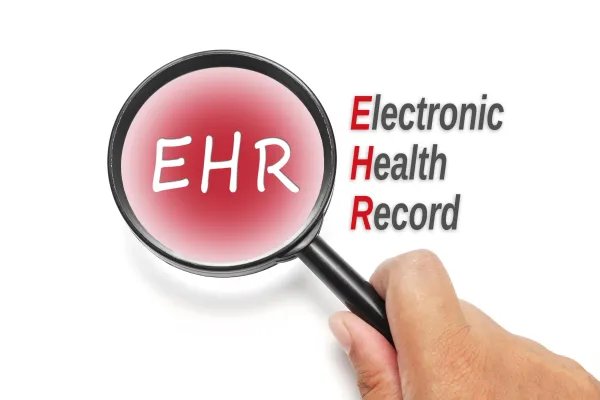Radiology Coding Alert
Put MIPS into Action with This Plan
Confidently integrate MIPS following these steps. Last month, we gave you a foundation of six accessible, radiology-specific Merit-based Incentive Payment System (MIPS) measures to report, but knowing the specifics on when and how to report them can be headache-inducing. While these measures have remained constant since the Physician Quality Reporting System (PQRS), fundamental misunderstandings on when and how to implement certain measures still exist within the coding community. Jennifer M. Connell, CPC, CENTC, CPCO, CPMA, CPPM, CPC-P, CPB, CPC-I, Owner of E2E Health Solutions in Victoria, Texas, outlines two quick tips on how to successfully implement MIPS measures into your practice: Help’s here: Let’s take a look at one of the more practical, yet lesser understood measures, so you can get a better understanding of MIPS overall: #405: Appropriate Follow-up Imaging for Incidental Abdominal Lesions (High Priority Measure) Read on for more info on how to report this MIPS measure. Master One Measure, Master Them All The first question to ask when documenting this (and any) MIPS measure is: What CPT® codes are applicable? According to CMS, you’ll want to report this measure on CPT® codes 74150, 74160, 74170, 74176, 74177, 74178, 74181, 74182, 74183, 76700, 76705, 76770, and 76775. That means that you’ll be reporting either one or two of three related G codes each time you come across one of these imaging procedures (for Medicare Part B patients). At their core, MIPS measures all follow the same root principles. Therefore, the most practical way to understand MIPS as a whole is by excelling at one particularly difficult measure. The focus of measure #405 is on incidental abdominal lesions of the liver, kidney, and adrenal gland. Specifically, you’ll be looking out for one of three incidental findings: Before getting into the application of codes, it’s important to understand one fundamental key point. When reporting a measure such as this one, you might be asked to go above and beyond the way in which you’d typically assess a diagnostic chart. Specifically, you’ll be referring more to the body of the report than the impression. Typically, most radiologists will not document incidental findings outside of the body of the report. The general exception to this rule is for patients with pre-existing conditions and/or malignancies (both past and present). Common misconception: Contrary to popular belief, an incidental finding isn’t necessarily one that lacks any medical significance. The term incidental refers to the finding as it relates to the presenting symptoms or disease. For example, if a patient presents for gallstones and a small kidney lesion was found on the computerized tomography (CT) scan, the physician would generally consider this an incidental finding. Conceptualizing this idea is important in understanding the context behind this MIPS measure. This measure is what CMS refers to as an “inverse measure.” According to CMS, “a lower calculated performance rate for this measure indicates better clinical care or control.” In other words, Medicare relies on this measure to determine which physicians are unnecessarily following up on incidental findings that are “probably” benign. The end goal is to prevent follow-up imaging on findings that Medicare does not deem to be medically necessary. Medicare’s rationale is that these follow-up exams are both costly and unnecessarily burdensome on the patient. Choose Between G Codes Reporting measure #405 will require coders to apply either one or two G codes, depending on the findings. The majority of cases will not result in any incidental findings at all. When no lesion is found in the dictation (or the lesion doesn’t meet the size requirements), you will only apply code G9551 (Final reports for abdominal imaging studies without an incidentally found lesion noted: Liver lesion ≤ 0.5 cm, Cystic kidney lesion < 1.0 cm or Adrenal lesion ≤ 1.0 cm noted or no lesion found). When a lesion of the appropriate size requirement is found and follow-up imaging is recommended (without explanation or justification), you will apply code G9548 (Final reports for abdominal imaging studies with follow-up imaging recommended). Additionally, you will apply code G9547 (Incidental finding: Liver lesion ≤ 0.5 cm, Cystic kidney lesion < 1.0 cm or Adrenal lesion ≤ 1.0 cm). In a circumstance where an appropriately sized incidental lesion is found and the physician offers a supporting explanation for the decision to perform follow-up imaging, you will apply code G9549 (Documentation of medical reason[s] that follow-up imaging is indicated [eg, patient has a known malignancy that can metastasize, other medical reason[s] such as fever in an immunocompromised patient]) in addition to code G9547. Finally, when the physician documents an appropriately sized lesion and follow-up imaging is not requested, you will report code G9550 (Final reports for abdominal imaging studies with follow-up imaging not recommended) in addition to code G9547. Consider this detailed clinical scenario: “Indication: Ascites “A patient presents for a CT abdomen/pelvis with contrast. The impression documents a hepatic cyst, hydronephrosis, and minimal ascites. The body of the report documents numerous incidental findings including an .8 cm kidney lesion. Due to the patient’s family history of malignancy of the kidneys, the radiologist recommends follow-up imaging.” Let’s break this apart piece-by-piece. We’re dealing with code 74177 (Computed tomography, abdomen and pelvis; with contrast material[s]). This code is applicable to MIPS measure #405; thus, we can evaluate the report and apply the proper G code(s). There’s a hepatic cyst referenced in the impression, but unless it’s specifically referred to as a lesion, we can leave it alone. The other documented findings in the impression are also irrelevant, so let’s move on to the kidney lesion mentioned in the body of the report. The guidelines for MIPS measure #405 state that you will document any kidney lesion less than 1 cm with code G9547. Then, you’ll be deciding between codes G9548, G9549, and G9550 — all of which state that an incidental finding matching the size criteria has been found. As code G9549 documents the suggestion of following up imaging with justification, you will apply this code alongside G9547. Keep in mind: If you do not work with a coding program that automatically flags MIPS-eligible CPT® codes, keep a list available until you’ve got them memorized. Also, remember to search the body of the report when working on one of these procedures, as many incidental findings do not make their way into the impression. Finally, remember that the implementation of MIPS is only applicable to Medicare patients. For details on each MIPS measure and their corresponding PQRS codes, visit: https://qpp.cms.gov/measures/quality.
Related Articles
Radiology Coding Alert
- MIPS:
Put MIPS into Action with This Plan
Confidently integrate MIPS following these steps. Last month, we gave you a foundation of six [...] - ICD-10 Coding:
Choose the Right Dx For These Non-indexable Spinal Diseases
Five examples of what to do when the index fails you. The transition from ICD-9 [...] - CPT®:
Get Acclimated with AAA Ultrasound and Duplex Codes
Choose correctly between these abdominal aorta ultrasound/duplex scan codes. You’re already aware of 2017’s new [...] - You Be the Coder:
Know Difference Between Limited, Complete Fetal Ultrasounds
Question: You are working on a report of a fetal transabdominal ultrasound with a gestational age [...] - Reader Question:
Use These Tips to Correctly Code Nodule, Hyperthyroidism Combo
Question: A patient diagnosed with hyperthyroidism was found to have an additional single thyroid nodule during [...]




